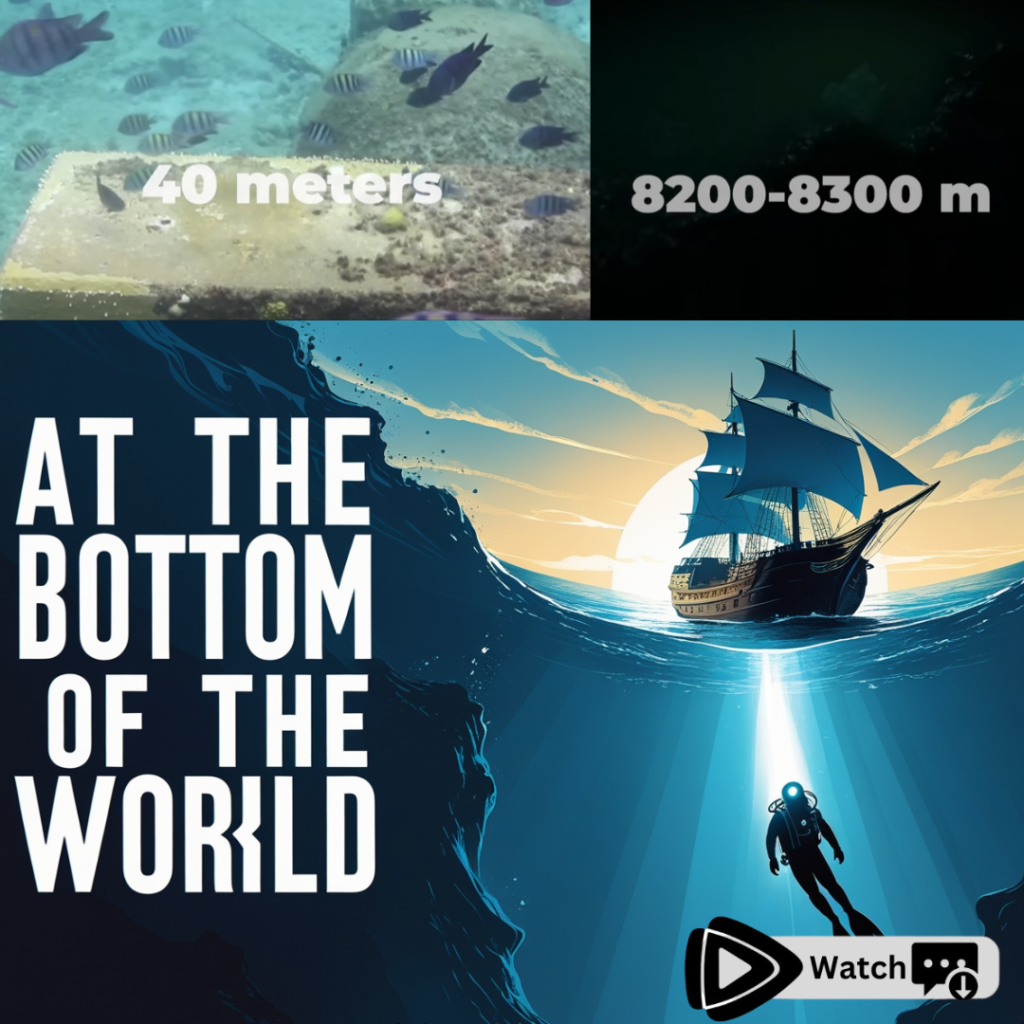
The oceans of our planet remain one of the least explored and most mysterious places on Earth. In fact, much of the deep ocean remains a vast unknown, with scientists estimating that we know more about the surface of Mars than we do about the ocean floor beneath us. With oceans covering over 70% of the Earth’s surface, it is astonishing to think that the majority of life on Earth actually resides under water.
In this blog, we embark on an eerie journey to explore the most horrifying and deepest parts of the oceans, where the conditions are so extreme that life adapts in truly bizarre ways. From unknown species to the most alien environments, the depths of the ocean are home to some of the most extreme conditions known to science.
The Abyssal Depths: Into the Heart of Darkness
The ocean is an incredibly vast body of water, and as we descend further, we encounter progressively alien conditions. The deeper we go, the less we know. Our journey begins at 40 meters, the maximum depth that pearl collectors can dive to without scuba equipment, where the pressure is enough to make air escape from the lungs.
At 200 meters, most marine life thrives, thanks to the sunlight that still manages to penetrate the water. Phytoplankton blooms at this depth, which in turn feeds small crustaceans, fish, and even large mammals like whales. But as we dive deeper, sunlight fades, and life forms become scarcer and stranger.
The Twilight Zone: A World of Darkness
At 1,000 meters, we enter the twilight zone of the ocean. Here, only 1% of sunlight reaches the water, and bioluminescence—self-generated light from living creatures—becomes the dominant form of light. At this depth, siphonophores, the relatives of jellyfish, form colonies, and the creatures in the ocean are often forced to adapt, using bioluminescence for hunting or self-defense.
As we descend further into the midnight zone, total darkness reigns, and food becomes scarce. Marine life at these depths has learned to conserve energy and survive on the “sea snow”—dead fish, plant matter, feces, and sand—drifting down from above.
The Deepest Points: The Mariana Trench
No discussion of the ocean’s depths is complete without mentioning the Mariana Trench, the deepest place on Earth. Located in the Pacific Ocean, the trench is over 1,550 miles long and reaches depths of over 10,900 meters (around 36,000 feet). The most famous part of the trench is the Challenger Deep, the world’s deepest point, which lies 10,994 meters below sea level.
Despite the hostile conditions—extreme pressure, freezing temperatures, and total darkness—the Mariana Trench is home to a variety of life forms. In 1960, explorers Jacques Piccard and Don Walsh became the first humans to reach the trench’s depths. Since then, numerous expeditions have uncovered remarkable life forms, including giant single-celled organisms and previously unknown species of fish.
In 2014, a team discovered snailfish at depths of over 8,000 meters, a species that thrives in the extreme pressures of the deep ocean. Remarkably, these fish have no natural predators in such a harsh environment, and they represent one of the most profound mysteries of ocean life.
The Puerto Rican Trench: Secrets of the Atlantic
On the other side of the globe lies the Puerto Rican Trench, the deepest part of the Atlantic Ocean. This trench, located between the Caribbean Sea and the Atlantic Ocean, reaches a depth of over 8,000 meters. The area is known for its seismic activity and is infamous for the 1918 earthquake and tsunami that devastated Puerto Rico. Despite its extreme conditions, the trench has been home to fascinating discoveries, including a swarm of amphipods, small crustaceans, and a variety of invertebrates that should not exist at such depths.
The Kermadec Trench: A Mysterious Underwater World
In the Pacific Ocean lies another deep depression—the Kermadec Trench. This trench, discovered in 1889, reaches depths of over 10,000 meters, not far from the Mariana Trench. Expeditions have discovered unique species such as the Alicella gigantia amphipod, showcasing the distinct and adapted lifeforms that thrive in this extreme environment.
The Fascinating Life at Extreme Depths
One of the most fascinating aspects of deep-sea exploration is the life that exists in such extreme environments. From bioluminescent creatures that light up the darkest corners of the ocean to massive predators like giant squid, these creatures are masters of adaptation.
Conclusion: A World Still Waiting to Be Fully Explored
The deep ocean remains one of the last frontiers on Earth, and its mysteries are still being uncovered. With each new dive, we learn more about the strange and alien life that inhabits the ocean’s depths. Whether it’s the terrifying abyssal plains or the fascinating ecosystems of the Mariana Trench, the ocean continues to surprise us with its beauty and dangers.
If you’re curious about the unexplored realms of our planet, the ocean’s deepest places are sure to leave you in awe of the mysteries that still lie beneath the waves. Will we ever fully understand what lurks in the darkest corners of the sea? Only time will tell.

